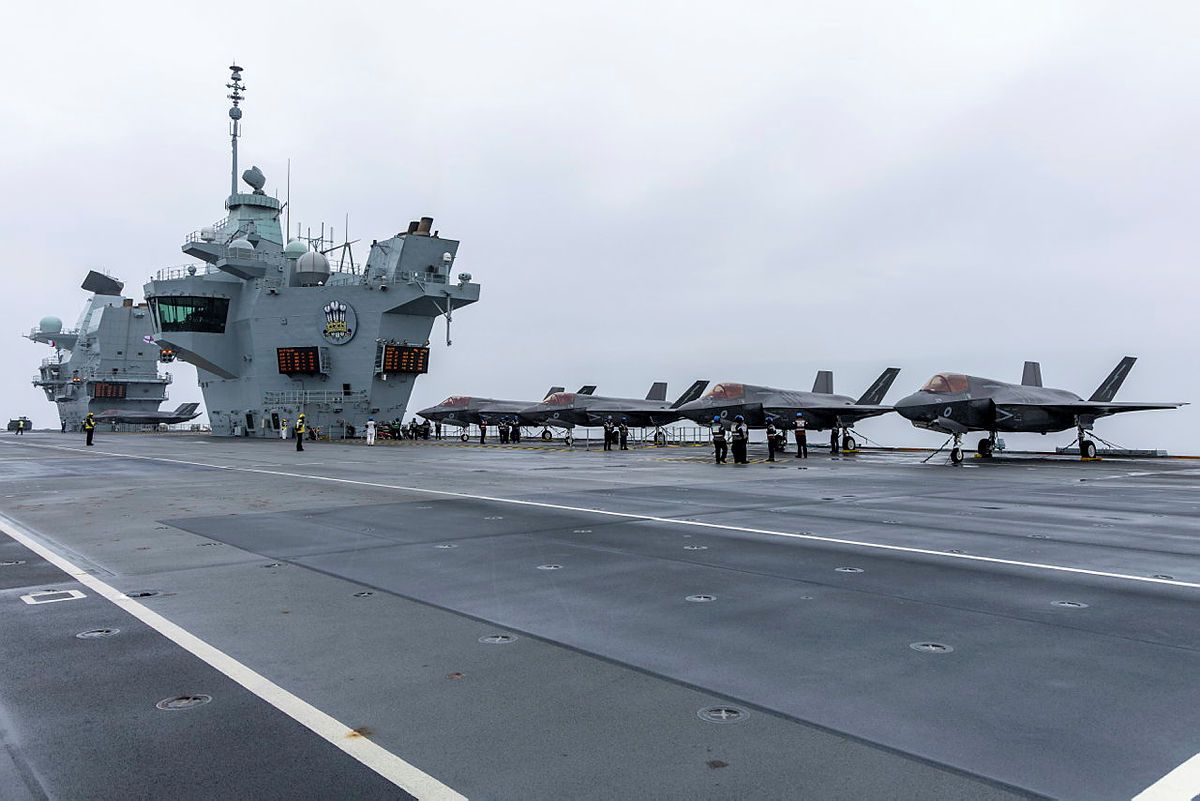UK releases Strategic Defence Review heralding a new era for defence
- Europe
- News
- Investment

The SDR serves as a clear and detailed guide to the UK’s defence position and posture.
The UK Strategic Defence Review (SDR) – the third review in four years – has been unveiled.
Published on 2 June, the review aims to shape the UK’s defence posture and priorities for years to come, building on the 2.5% of GDP committed to defence from April 2027.
The UK will move to “war-fighting readiness”, adopting a “NATO-first” posture, the SDR proclaimed.
Key takeaways from the SDR include building up to 12 nuclear powered attack submarines (SSN) under AUKUS; earmarking GBP11 billion a year for frontline kit; and investing GBP15 billion over the next four years to build up its sovereign warhead programme.
Although funding and the number of nuclear submarines is yet to be confirmed.
Homeland resilience is a key theme running throughout the SDR, where a “whole of society approach” will be sought to strengthen “the nation’s readiness for war”.
Educating civilians, establishing a new National Cyber and Electromagnetic Command by the end of this year, and introducing a new Defence Readiness Bill to give the government additional powers to support mobilisation in times of crisis are all planned as part of this.
The government will also explore forming a new homeland reserve force to protect critical national infrastructure.
Details on equipment programmes and timeframes were largely omitted in the SDR, with specific details coming later in the Autumn under the Defence Investments Plan.
Ahead of this plan, the Ministry of Defence (MoD) will engage with industry to determine the optimum approach and equipment required to meet the SDR’s needs, an MoD spokesperson explained to DSEI UK and other media representatives during the launch of the SDR.
Despite this, several key equipment programmes were detailed in the SDR.
These include:
- Up to 12 SSN submarines built under AUKUS – replacing the seven Astute-class boats.
- Over GBP1billion earmarked towards building a Digital Targeting Web system by 2027. The system aims to connect all sensors, deciders, and effectors across all domains into an integrated architecture – supported by AI.
- Six new munitions and energetics factories – backed by GBP1.5 billion of investment – and up to 7,000 long-range weapons will be built, supported by an ‘always on’ pipeline to ensure production supply when needed.
- Up to GBP1 billion to bolster homeland air and missile defence.
- More F-35s will likely be acquired. This could involve buying F-35As, which can carry air-delivered nuclear weapons – a capability the UK does not have.
- The UK will start to define the requirement for the post-Dreadnaught nuclear deterrent within this parliament.
While specific equipment details will be announced later in the year, James Gavin, the head of the MoD’s Future Capability Innovation, revealed in an interview with DSEI UK in March several equipment programmes the MoD is considering.
Aside from equipment, from an operational perspective, the SDR outlines a clear shift: the military will become “integrated by design”, operating as “one force” under the Chief of the Defence Staff.
This will be underpinned by a “common digital foundation” through the Digital Targeting Web. A dedicated Digital Warfighter group, deployed alongside frontline personnel, will also be established by July 2026 as part of this digital approach.
In addition, the military will become increasingly “hybrid” – one where conventional platforms, such as armoured vehicles and submarines, are augmented with AI, software, long-range weapons, and drones.
For the Royal Navy, this will involve the carriers hosting F35-B aircraft as well as very long-range precision missiles, attritable systems, and protector equivalent unmanned aerial vehicles to extend the ship's range and lethality, the MoD spokesperson explained.

Royal Air Force 617 Squadron F-35B aircraft aboard HMS Prince of Wales. (AS1 Amber Mayall RAF/UK MoD Crown Copyright 2024)
The importance of long-range missiles is mentioned on several occasions in the SDR as well. When asked about this, the MoD spokesperson said that they will purchase a range of capabilities, from advanced to inexpensive systems that enable mass.
In addition, a new Defence Uncrewed Systems Centre will be established by February 2026, recognising the instrumental impact these systems have played in the Ukraine conflict.
The return of high-intensity ground warfare has also returned. Considering this, many were expecting the size of the British Army to increase from its current target of 73,000 soldiers – the lowest since the Napoleonic era.
Despite acknowledging this, the SDR states: “We envisage an increase in the total number…when funding allows.”
Regarding its implications for industry, the SDR maintains the governments message on overhauling its partnership with industry. Although, further details will be released in the forthcoming Defence Industrial Strategy.
It does however mention that a new Defence Exports Office within the MoD will be established, shifting responsibility from the Department of Business and Trade. A new dedicated strategy for the financial sector will also be written by March 2026.
Commenting on the SDR, Air Vice Marshal (retd) Gary Waterfall CBE, former Chief of Staff of Operations for the Permanent Joint Headquarters, said: “It marks a welcome step forward across the defence enterprise. It provides a comprehensive overview of the complex set of challenges that predicate a need to transition to a state of ‘warfighting readiness’…the need to make collective defence a responsibility for us all is [also] wholly appropriate for where we sit in troubled times.”
Nevertheless, the critical question is how the UK will fund these initiatives. Building 12 SSN-AUKUS submarines alone will sap vast quantities of the budget, with many claiming that 3-3.5% is required to support this programme, including the UK’s multi-billion-pound sixth-generation fighter aircraft. Despite this, the government is reticent to set a clear timeframe for when it will meet 3% of GDP. This is especially pertinent given NATO is expected to set a 3.5% spending target in June. If the UK is to be “NATO-first” it will likely have to agree on this target.
DSEI Defence News is part of DSEI UK and the broader Clarion Defence portfolio. Register now to attend DSEI UK 2025 and engage with international defence leaders, key decision-makers, and the wider defence community
Tags
- 12
- billion
- building
- clear
- defence
- digital
- dsei
- equipment
- four
- key
- longrange
- mod
- new
- nuclear
- posture
- readiness
- review
- sdr
- strategic
- submarines
- systems
- uk
- uks
- under
- up
- years
Providing impartial insights and news on defence, focusing on actionable opportunities.
-
DSEI Gateway speaks with the EU and SMEs to explore whether the EU's sprawling bureaucracy is failing to serve the firms that need it most.
-
New
Australia revamps submarine supplier portal, primes take responsibility
06 Nov 2025 Benjamin HoweThe portal centralises opportunities for Australian businesses, including small companies, looking to participate in the nuclear submarine programme. -
The value of the project highlights the MoD’s commitment to advancing ACP development.


)
)
)
